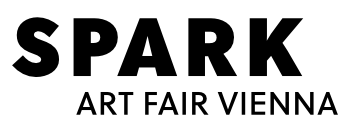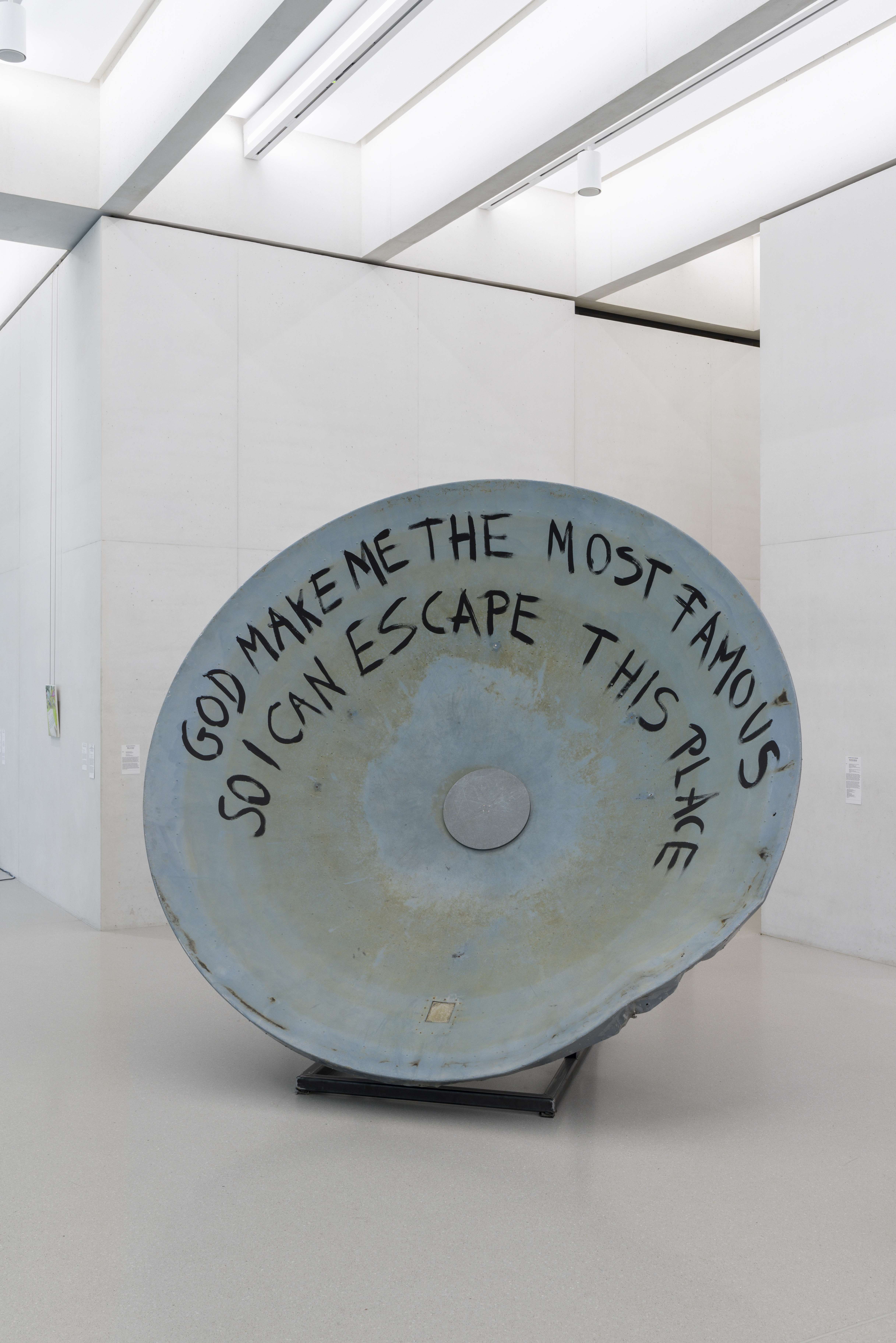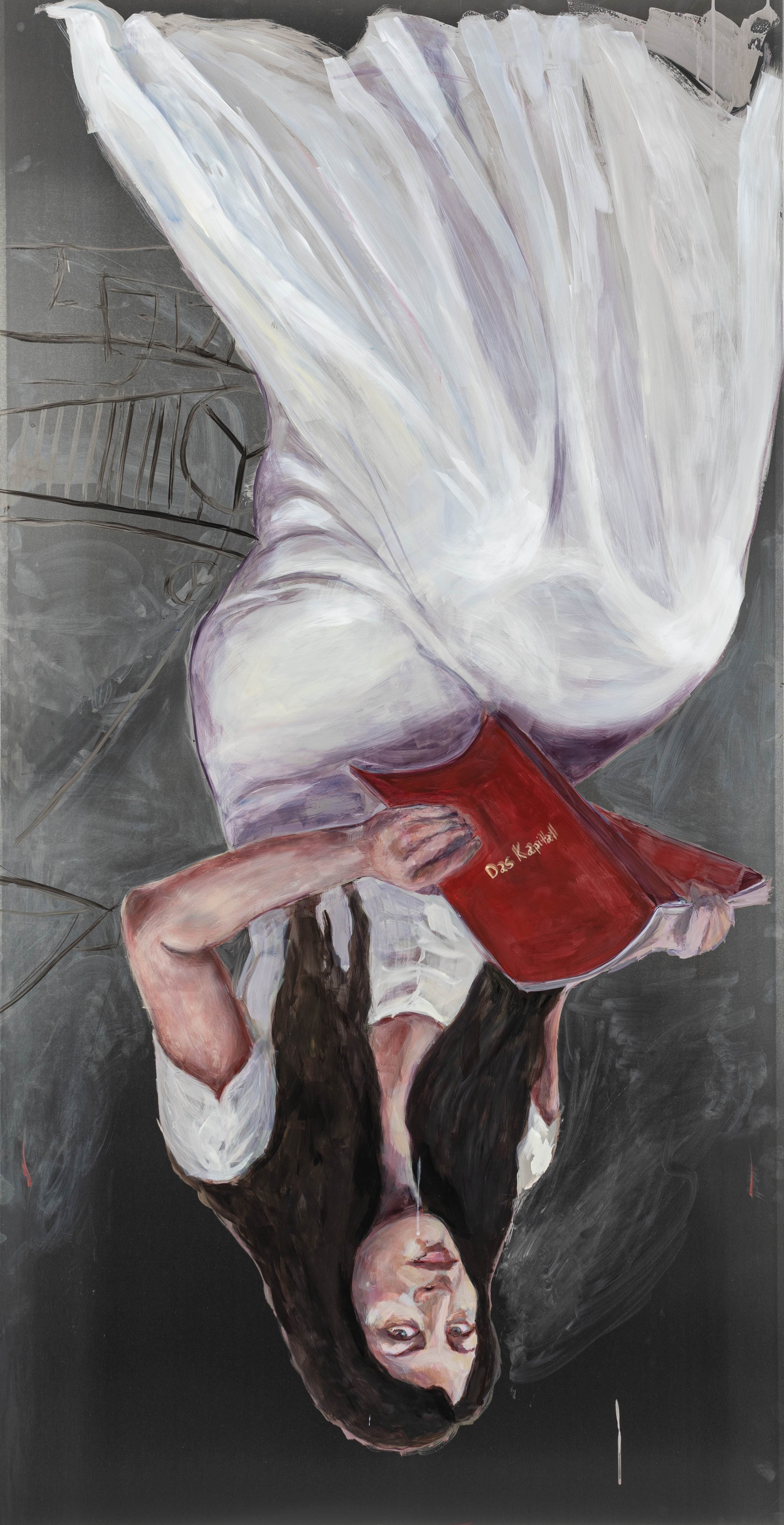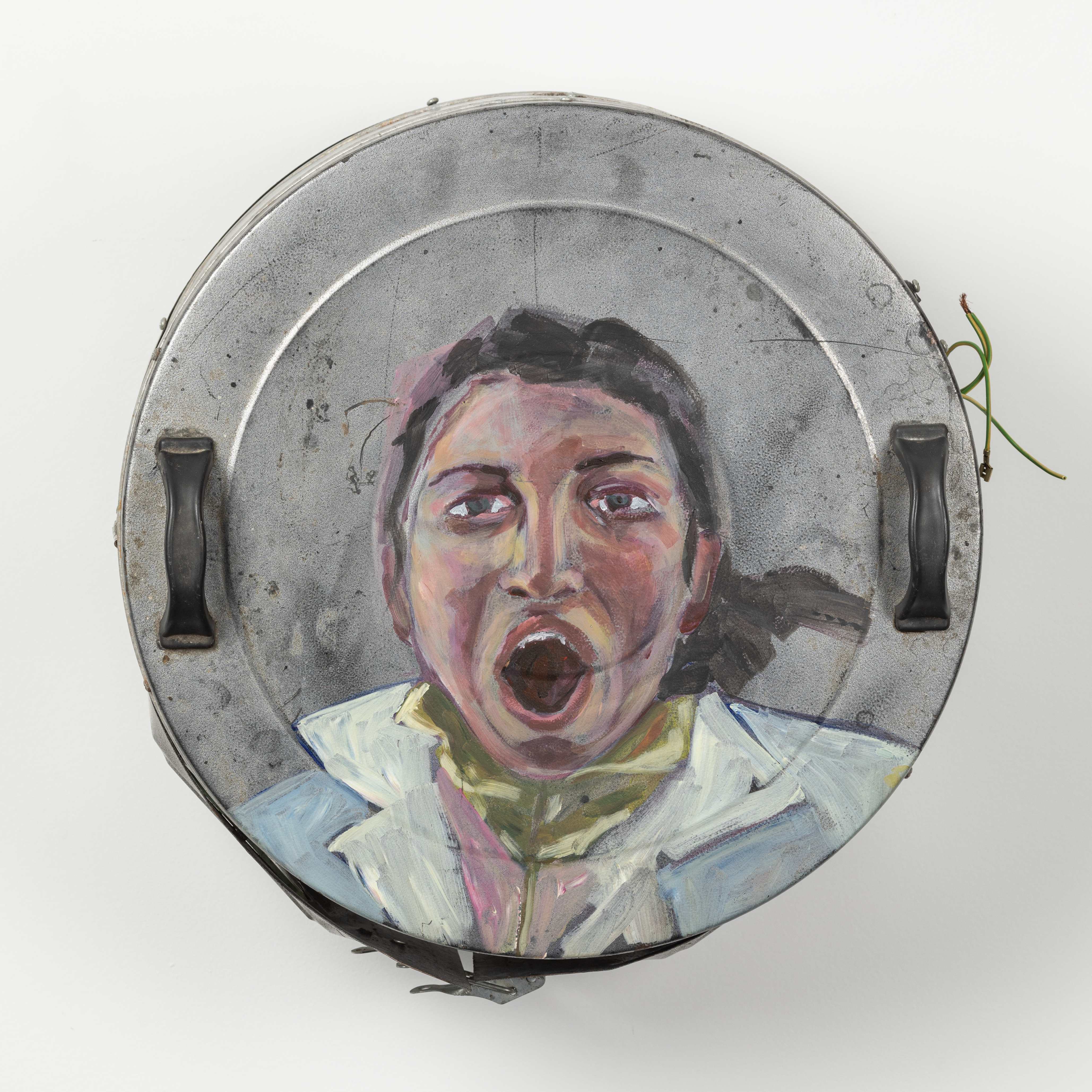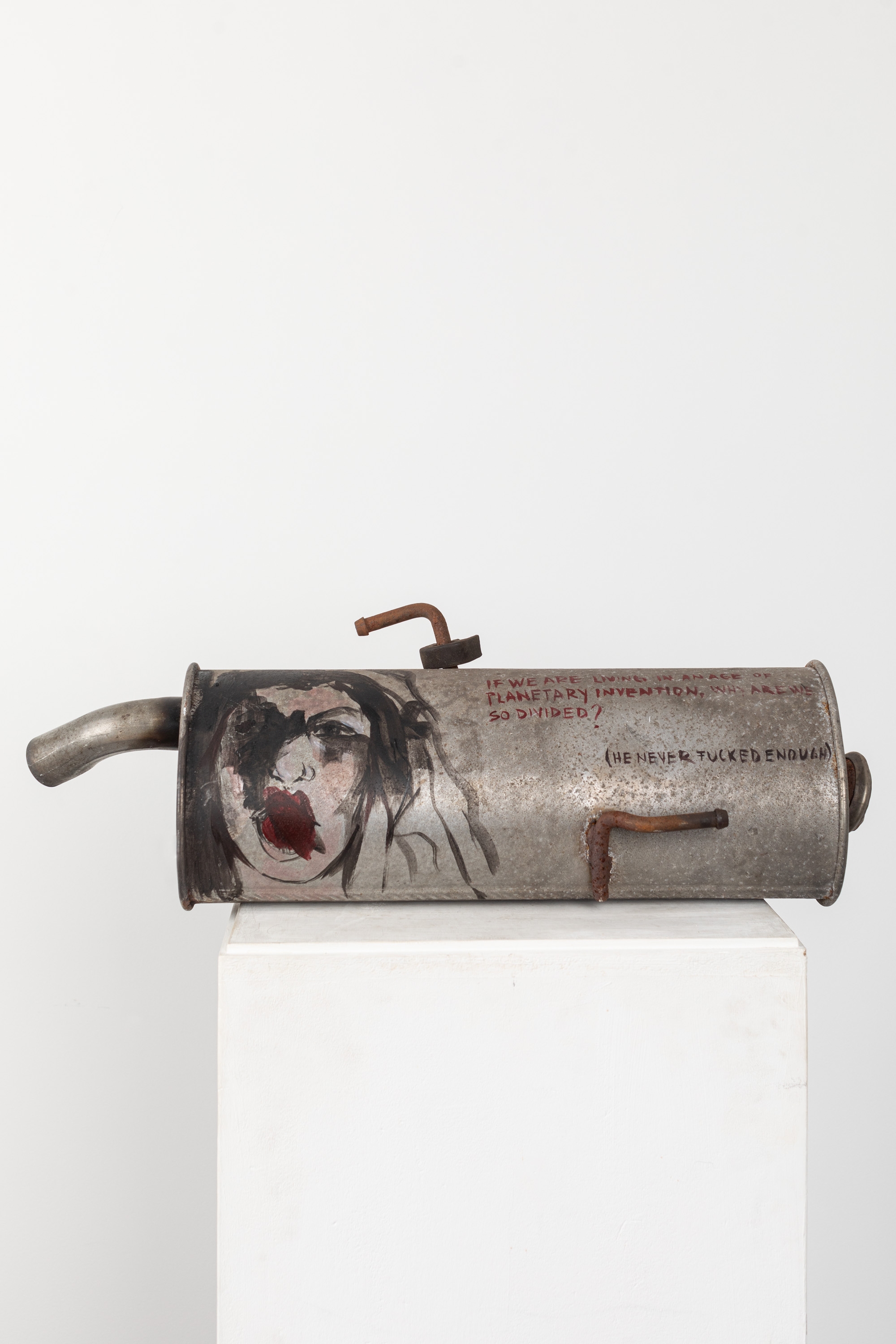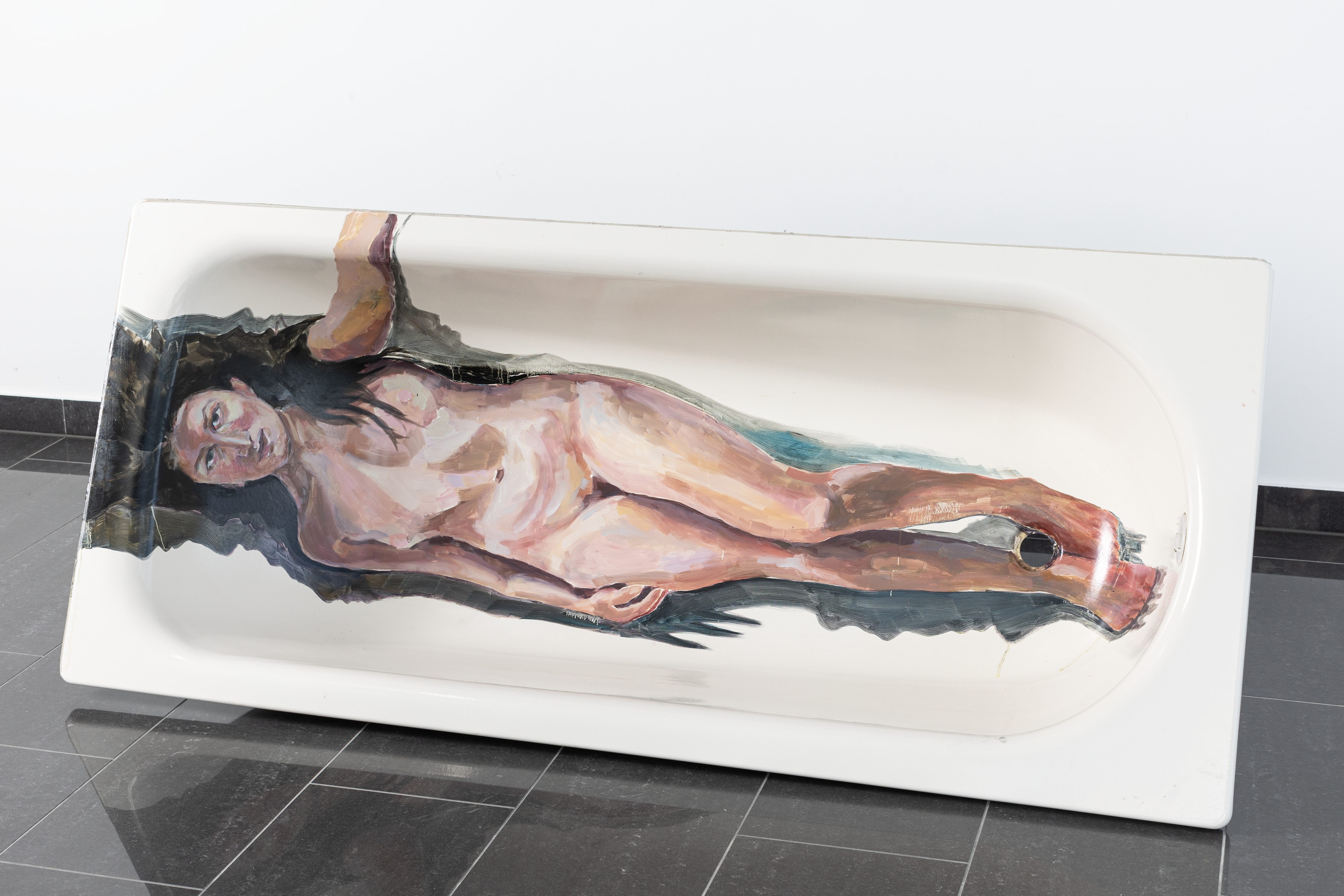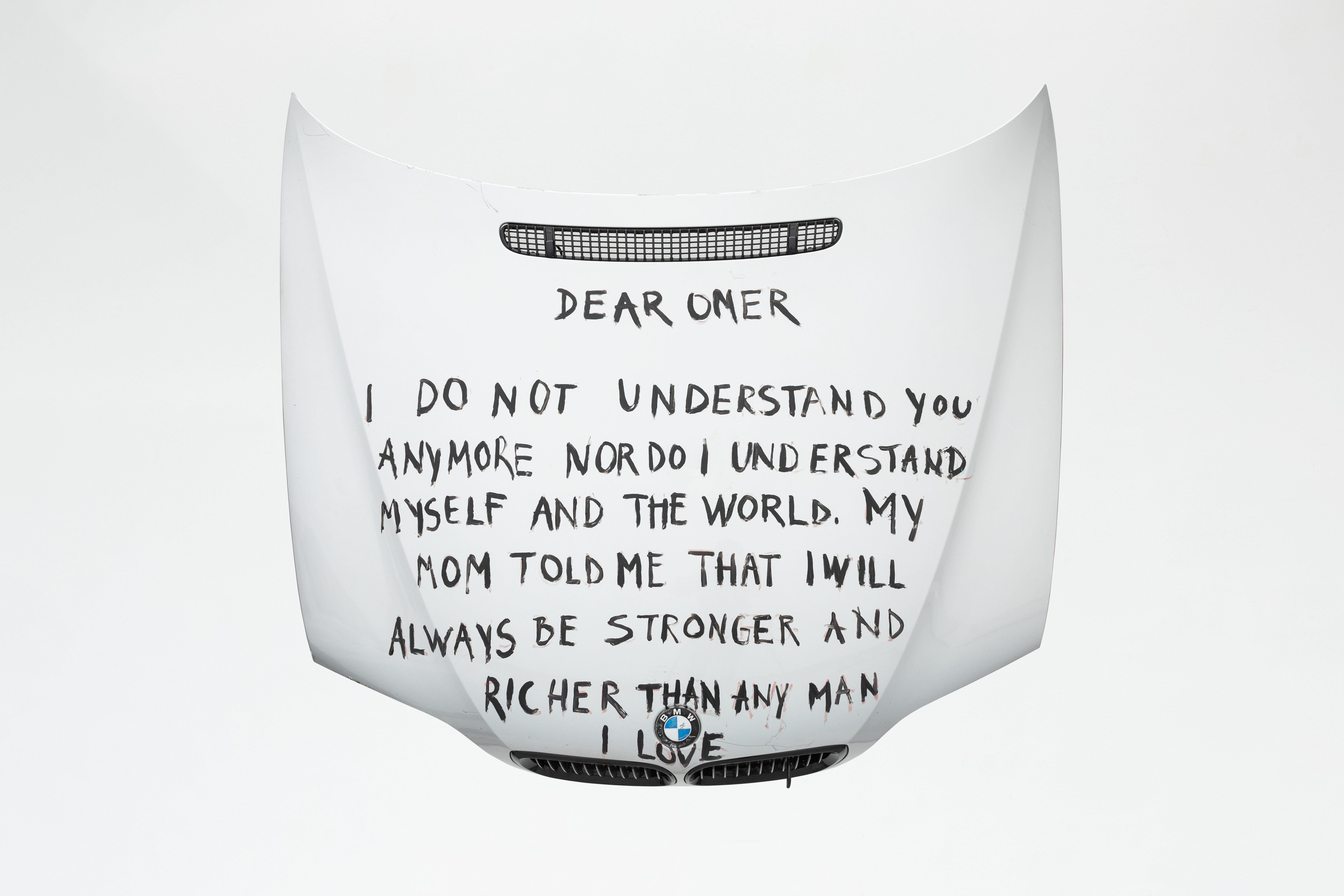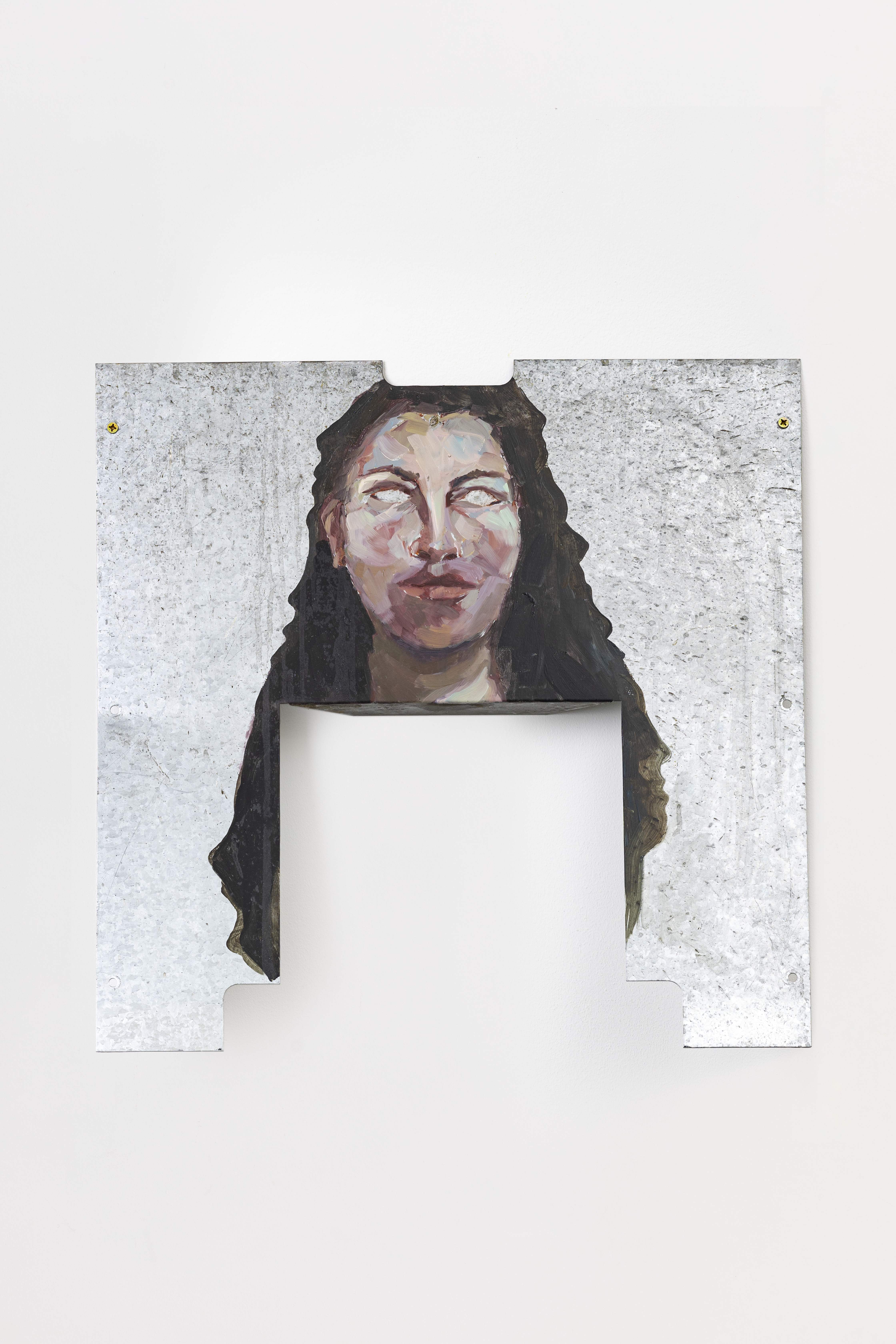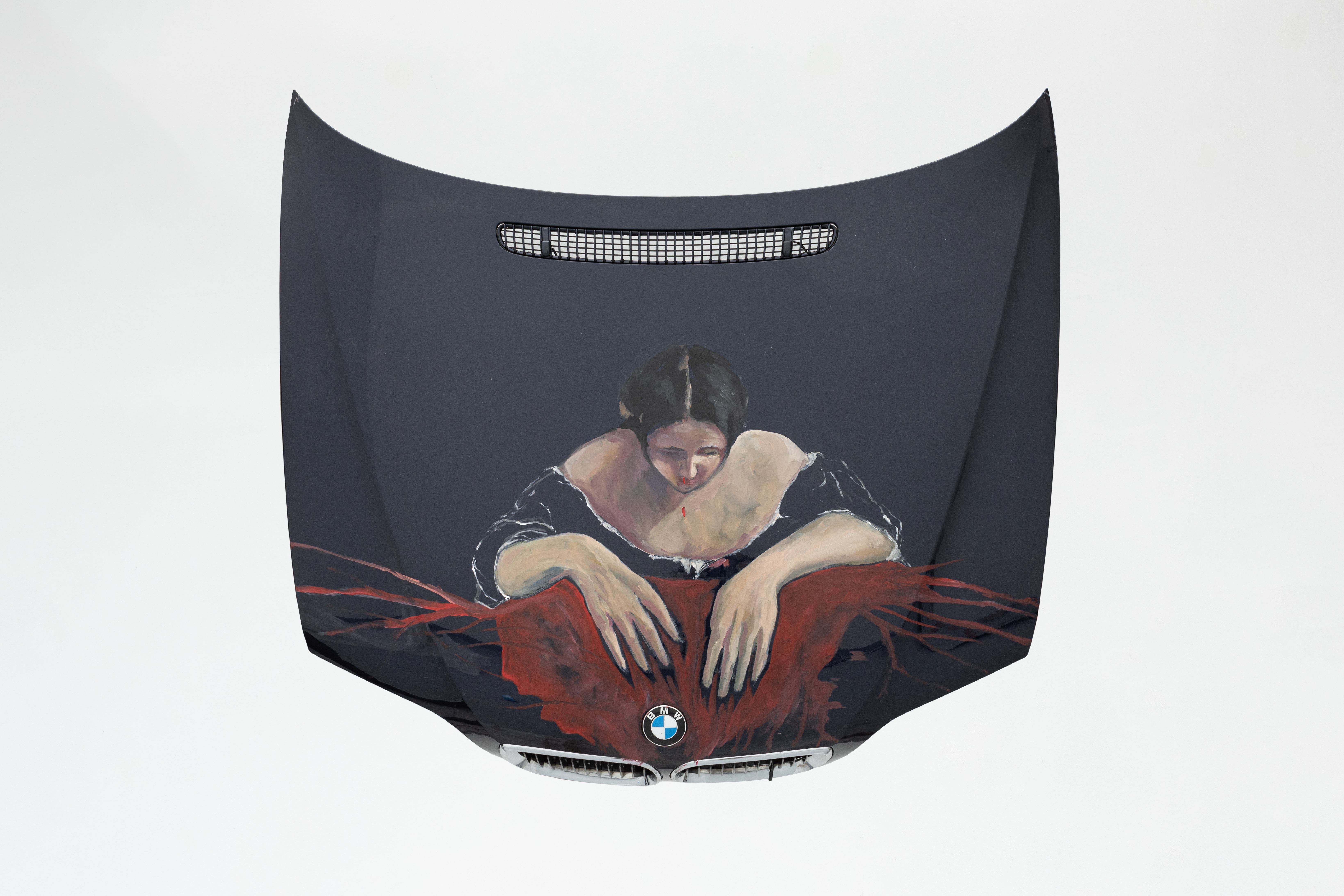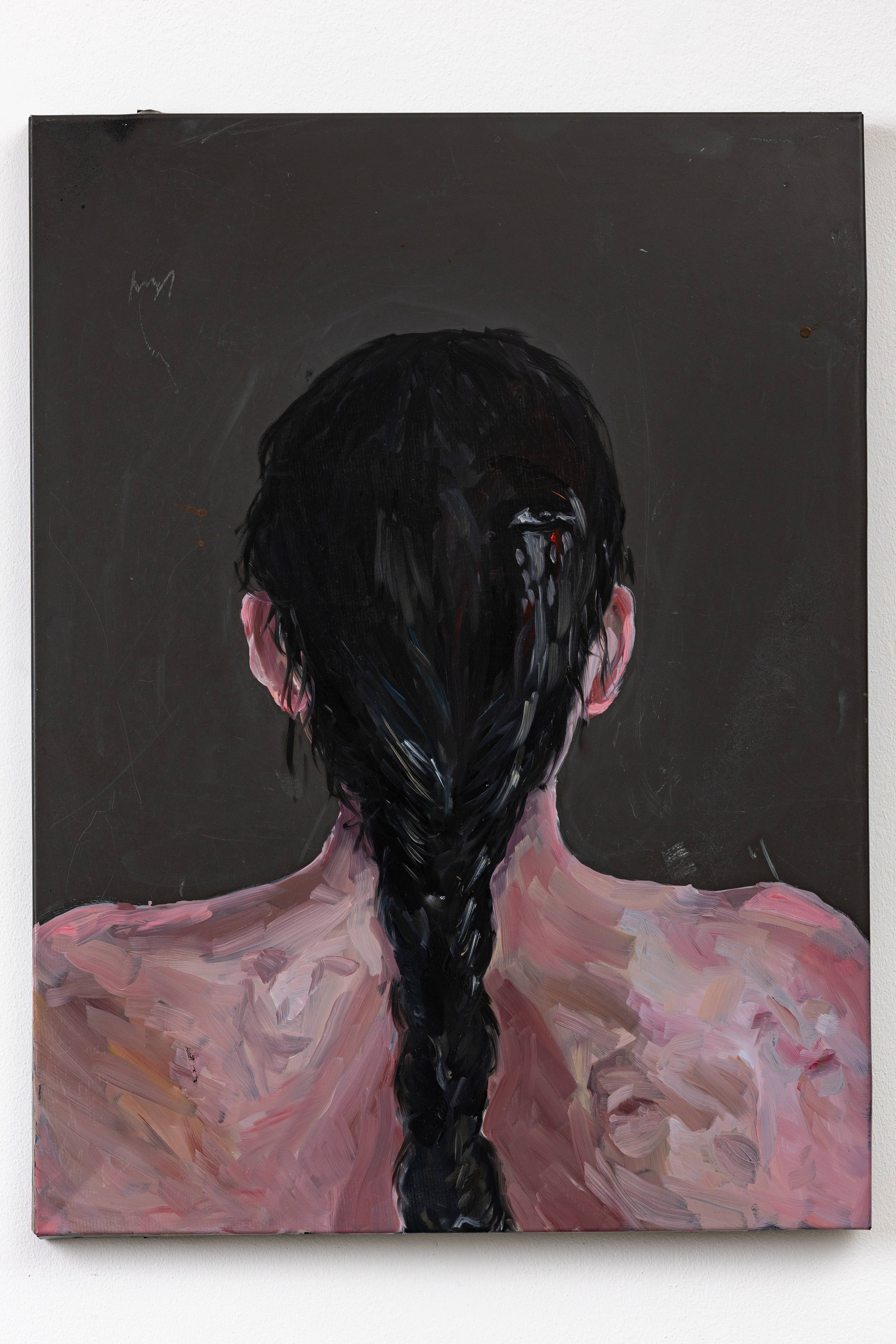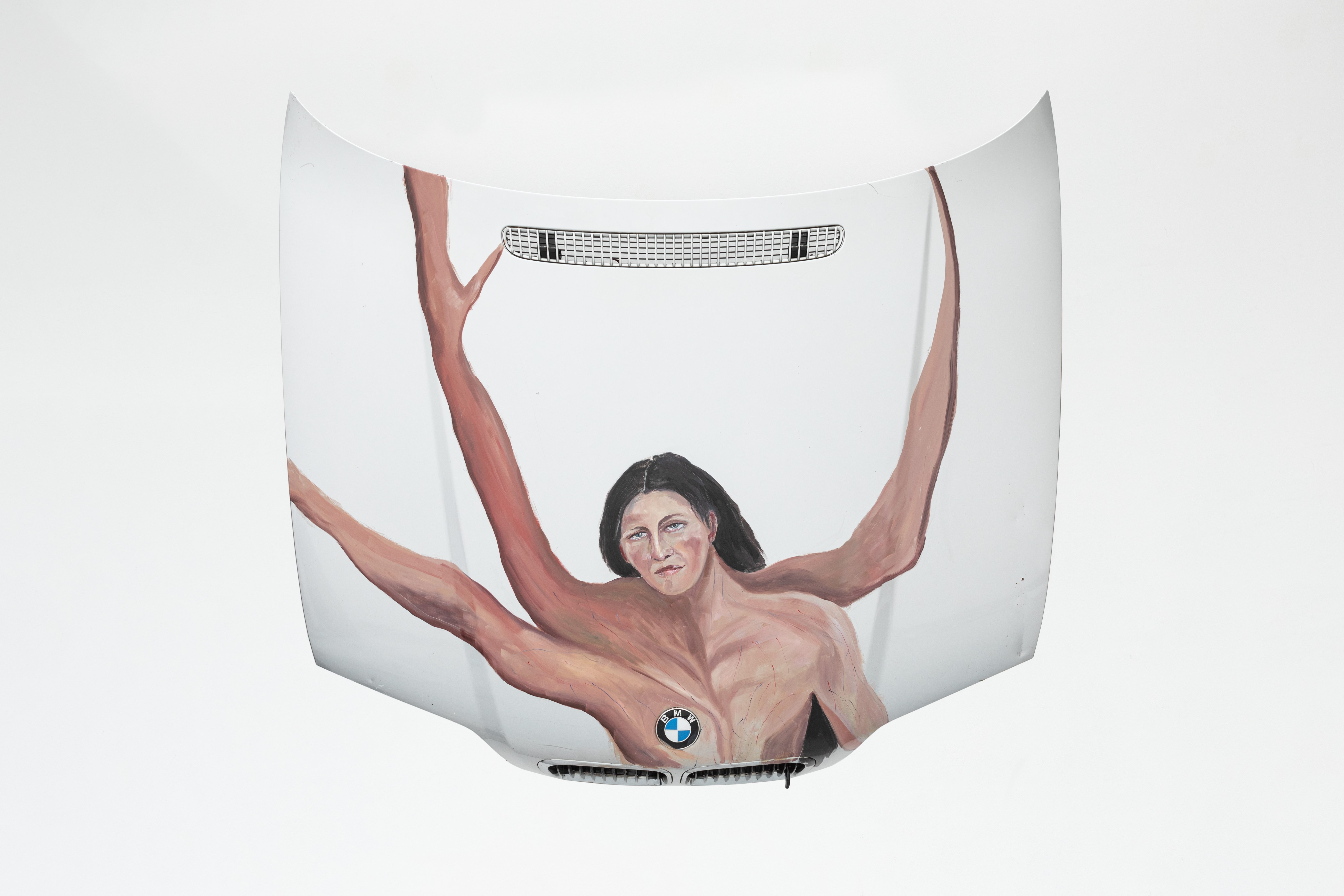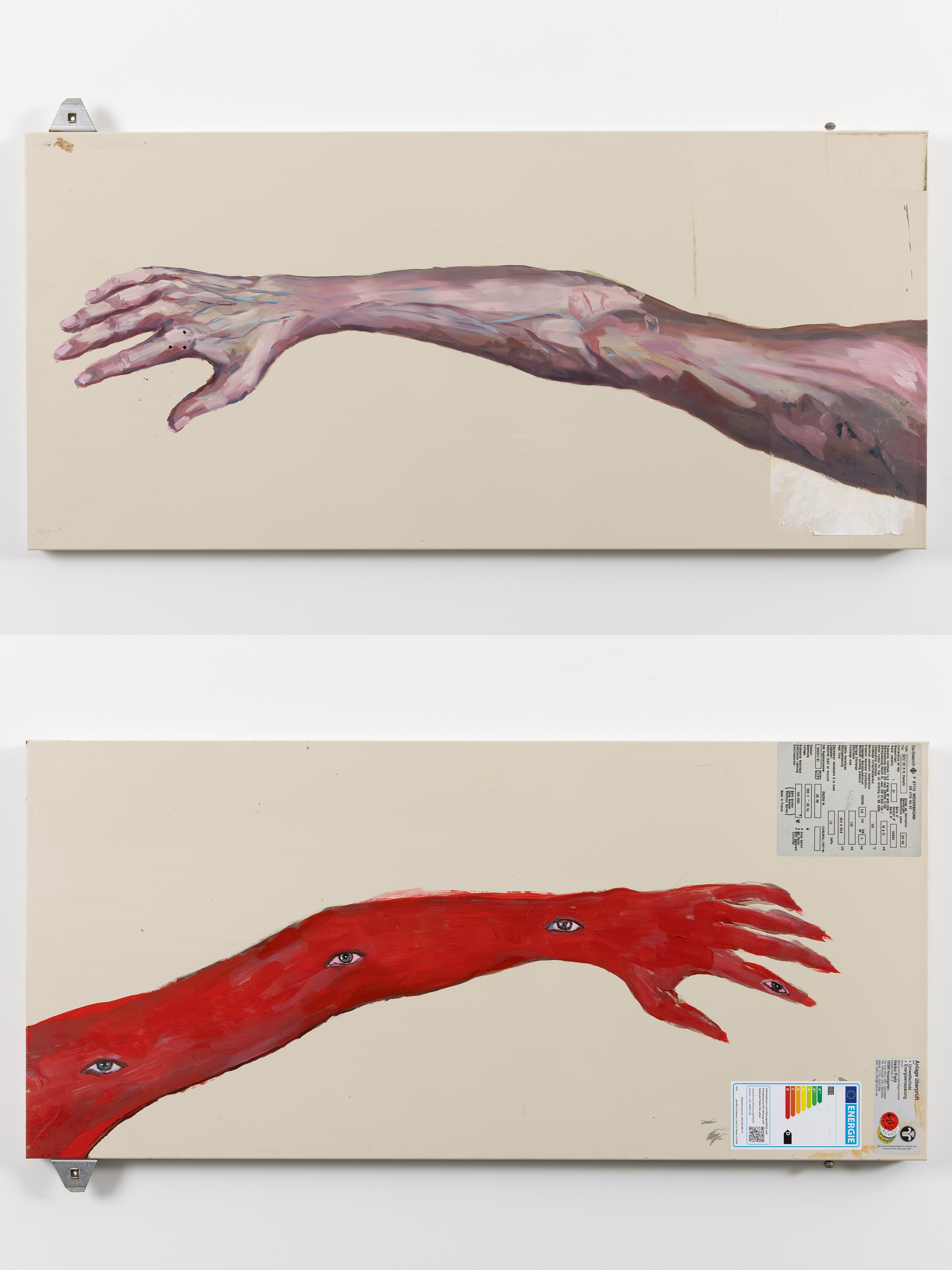acb
Selma Selman
For this edition of SPARK, acb proposes a solo presentation of Selma Selman’s recent paintings on discarded metal, a conceptual recycling practice that, alongside performances, is the young artist’s main means of expression. Transcending the way her family has supported itself for generations, Selman has been embracing and blasting the stereotypes affecting Roma people by focussing on her own specific condition as a young woman artist of Roma origins from Bosnia. The presentation comprises text-based paintings from the lyrical Letter to Omer series (ongoing), figurative compositions on Mercedes-Benz car parts, hoods and doors, as well as on smaller metal objects to be realised in 2025 specifically for SPARK Art Fair.
Selman’s paintings on scrap metal form a personal visual diary composed of – often symbolic – self-portraits, portraits of her family, impressions of everyday life in Bosnia, harsh and ironic reflections of her position in the whirlpool of global capitalism, sensitive and eerie text-based confessions, disquieting depictions of female body parts fluidly transforming into different organisms, as well as art historical references that have been determining for her.
Turning scrap metal into art, tran¬sforming stig¬ma¬tised labour into value; The artist’s inten¬tion unfolds both in an (up)cyclical and spiral way, and questions the modalities through which society assigns value to material objects, labour and relates to them both. By using scrap metal parts for her works, not only does the artist refer to her family’s struggling existence, but also symbolically transforms this seemingly useless surface into a conveyer of her message that transcends misery, discrimination and stereotypes.
Biography
The work of artist and activist Selma Selman, born in 1991 into a Roma community in Bosnia, draws heavily from her personal experiences to inform her internationally-recognised artistic practice. Selman is known for creating works that challenge stereotypes and critique oppressive systems. Her Roma heritage and her family’s background in collecting and recycling scrap metal deeply influence her art, particularly her use of industrial materials and references to labour, but also her personal history, her family background, issues of child marriage and women’s role in Roma communities and education. Selman’s aim is to break down the prejudice which keeps pushing down her community to the lowest common denominator, denying its right to self-expression. Selma is the founder of Get The Heck To School, an organisation that aims to empower Roma girls around the world facing poverty and social exclusion by encouraging them to pursue their studies.
Selma Selman is currently based between Amsterdam, New York and Bihać. She earned her Bachelor of Fine Arts in 2014 from Banja Luka University’s Department of Painting. In 2018, she graduated from Syracuse University, New York with a Master of Fine Arts in Transmedia, Visual and Performing Arts. She was a resident of Rijksakademie from 2021 to 2023 and exhibited at Stedelijk Museum, Amsterdam (2025), Schirn Kunsthalle, Frankfurt (2024), Gropius Bau and Hamburger Bahnhof, Berlin (2023), Autostrada Biennale, Prizren (2023), documenta fifteen, Kassel (2022), Manifesta 14, Prishtina (2022), National Gallery of Bosnia and Herzegovina, Sarajevo (2021), Queens Museum, New York (2019), Maxim Gorki Theater, Berlin (2017), amongst others. Last but not least, she was one of the exhibitors of the Roma Pavilion at the 2019 Venice Biennale.
acb
Founded in Budapest in 2003, acb Gallery has consistently developed into one of the leading actors in the Hungarian and Eastern European art scene in the past two decades. The profile of the gallery was first defined by the representation of Hungarian and international neo-conceptual and new media artists emerging in the 1990s. Since its foundation, acb has constantly been investigating the roots of the progressive local contemporary art scene, gradually broadening its focus to represent prominent members of the Hungarian neo-avant-garde who have left their mark on Central and Eastern-European art history since the 1960s and 1970s. With the intention to work with three generations of artists, acb has dynamically turned, in the past years, towards younger and emerging local and international artists as well.
acb runs three exhibition places: the main gallery space, which has been a trendsetter exhibition venue for more than two decades; acb Attachment, which functions as a project space hosting more experimental exhibitions; and acb Plus which is dedicated to large-scale solo and group presentations.
In 2015 the gallery has launched its new department, acb ResearchLab, which focuses on research and book publishing. In the framework of the gallery, this platform is aiming to fill the gap in the reception of Hungarian neo-avant-garde and post-avant-garde art. Throughout its research, publishing and wide exhibition activity, acb has played a key role in extending knowledge of Hungarian art in the 1960s and 1970s, as well as in reviewing and completing the existing canon.
Established in 2024, the newest branch of the gallery is acb Media, which includes a podcast and a youtube channel dedicated to artists represented by acb, to its exhibitions and related projects.
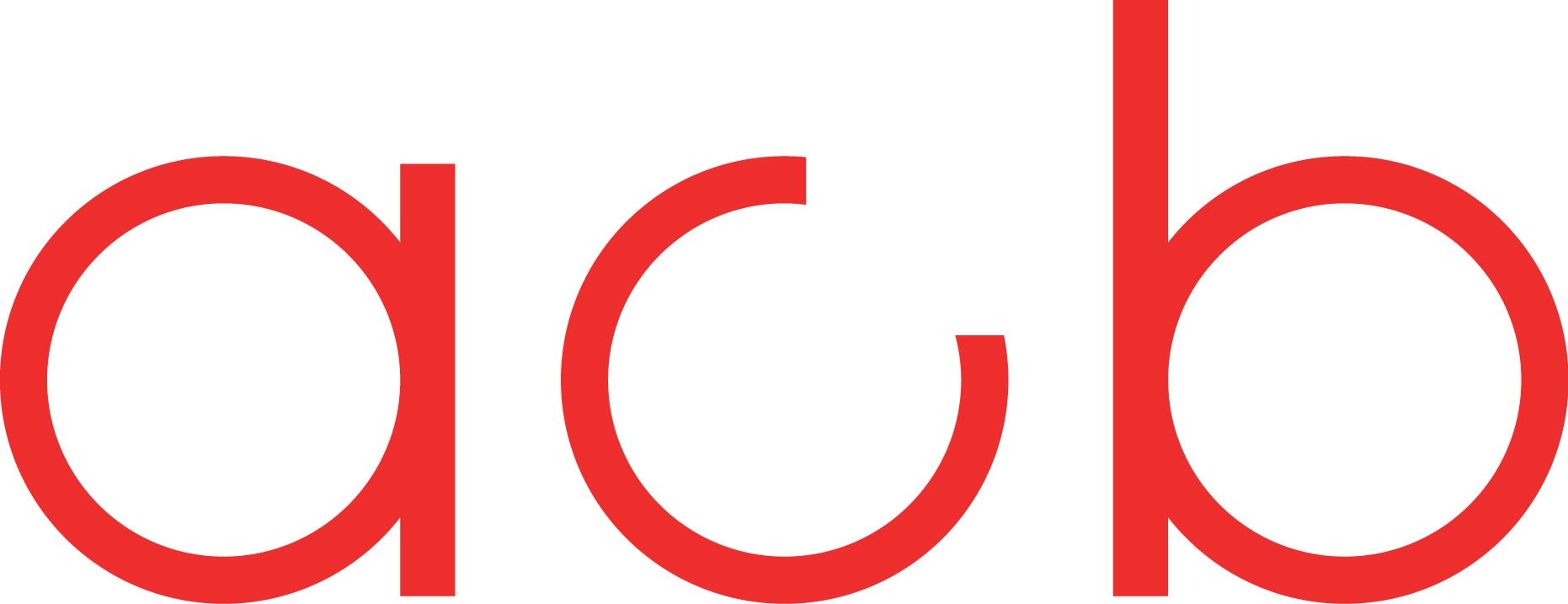
+3614137608
Róna Kopeczky
+3614137608
Selma Selman
For this edition of SPARK, acb proposes a solo presentation of Selma Selman’s recent paintings on discarded metal, a conceptual recycling practice that, alongside performances, is the young artist’s main means of expression. Transcending the way her family has supported itself for generations, Selman has been embracing and blasting the stereotypes affecting Roma people by focussing on her own specific condition as a young woman artist of Roma origins from Bosnia. The presentation comprises text-based paintings from the lyrical Letter to Omer series (ongoing), figurative compositions on Mercedes-Benz car parts, hoods and doors, as well as on smaller metal objects to be realised in 2025 specifically for SPARK Art Fair.
Selman’s paintings on scrap metal form a personal visual diary composed of – often symbolic – self-portraits, portraits of her family, impressions of everyday life in Bosnia, harsh and ironic reflections of her position in the whirlpool of global capitalism, sensitive and eerie text-based confessions, disquieting depictions of female body parts fluidly transforming into different organisms, as well as art historical references that have been determining for her.
Turning scrap metal into art, tran¬sforming stig¬ma¬tised labour into value; The artist’s inten¬tion unfolds both in an (up)cyclical and spiral way, and questions the modalities through which society assigns value to material objects, labour and relates to them both. By using scrap metal parts for her works, not only does the artist refer to her family’s struggling existence, but also symbolically transforms this seemingly useless surface into a conveyer of her message that transcends misery, discrimination and stereotypes.
Biography
The work of artist and activist Selma Selman, born in 1991 into a Roma community in Bosnia, draws heavily from her personal experiences to inform her internationally-recognised artistic practice. Selman is known for creating works that challenge stereotypes and critique oppressive systems. Her Roma heritage and her family’s background in collecting and recycling scrap metal deeply influence her art, particularly her use of industrial materials and references to labour, but also her personal history, her family background, issues of child marriage and women’s role in Roma communities and education. Selman’s aim is to break down the prejudice which keeps pushing down her community to the lowest common denominator, denying its right to self-expression. Selma is the founder of Get The Heck To School, an organisation that aims to empower Roma girls around the world facing poverty and social exclusion by encouraging them to pursue their studies.
Selma Selman is currently based between Amsterdam, New York and Bihać. She earned her Bachelor of Fine Arts in 2014 from Banja Luka University’s Department of Painting. In 2018, she graduated from Syracuse University, New York with a Master of Fine Arts in Transmedia, Visual and Performing Arts. She was a resident of Rijksakademie from 2021 to 2023 and exhibited at Stedelijk Museum, Amsterdam (2025), Schirn Kunsthalle, Frankfurt (2024), Gropius Bau and Hamburger Bahnhof, Berlin (2023), Autostrada Biennale, Prizren (2023), documenta fifteen, Kassel (2022), Manifesta 14, Prishtina (2022), National Gallery of Bosnia and Herzegovina, Sarajevo (2021), Queens Museum, New York (2019), Maxim Gorki Theater, Berlin (2017), amongst others. Last but not least, she was one of the exhibitors of the Roma Pavilion at the 2019 Venice Biennale.
acb
Founded in Budapest in 2003, acb Gallery has consistently developed into one of the leading actors in the Hungarian and Eastern European art scene in the past two decades. The profile of the gallery was first defined by the representation of Hungarian and international neo-conceptual and new media artists emerging in the 1990s. Since its foundation, acb has constantly been investigating the roots of the progressive local contemporary art scene, gradually broadening its focus to represent prominent members of the Hungarian neo-avant-garde who have left their mark on Central and Eastern-European art history since the 1960s and 1970s. With the intention to work with three generations of artists, acb has dynamically turned, in the past years, towards younger and emerging local and international artists as well.
acb runs three exhibition places: the main gallery space, which has been a trendsetter exhibition venue for more than two decades; acb Attachment, which functions as a project space hosting more experimental exhibitions; and acb Plus which is dedicated to large-scale solo and group presentations.
In 2015 the gallery has launched its new department, acb ResearchLab, which focuses on research and book publishing. In the framework of the gallery, this platform is aiming to fill the gap in the reception of Hungarian neo-avant-garde and post-avant-garde art. Throughout its research, publishing and wide exhibition activity, acb has played a key role in extending knowledge of Hungarian art in the 1960s and 1970s, as well as in reviewing and completing the existing canon.
Established in 2024, the newest branch of the gallery is acb Media, which includes a podcast and a youtube channel dedicated to artists represented by acb, to its exhibitions and related projects.
